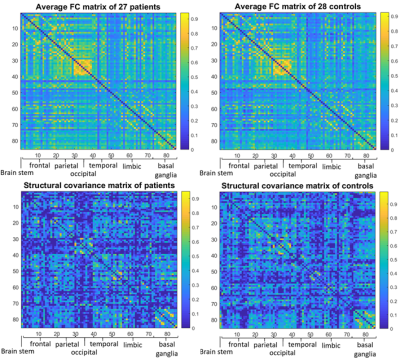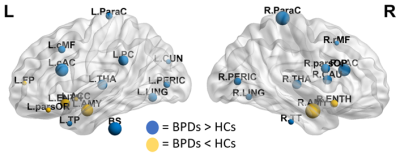Giovanni Sighinolfi1, Stefania Evangelisti2, Micaela Mitolo3, Claudio Bianchini2, Laura Ludovica Gramegna2,3, David Neil Manners2, Caterina Tonon2,3, Raffaele Lodi2,3, Francesca D'Adda2, Luca Pellegrini2, Marco Menchetti2, Domenico Berardi2, and Claudia Testa1
1Dipartimento di Fisica e Astronomia, Università di Bologna, Bologna, Italy, 2Dipartimento di Scienze Biomediche e Neuromotorie, Università di Bologna, Bologna, Italy, 3IRCCS Istituto delle Scienze Neurologiche di Bologna, Bologna, Italy
1Dipartimento di Fisica e Astronomia, Università di Bologna, Bologna, Italy, 2Dipartimento di Scienze Biomediche e Neuromotorie, Università di Bologna, Bologna, Italy, 3IRCCS Istituto delle Scienze Neurologiche di Bologna, Bologna, Italy
Graph
analysis of brain networks in early-stage Borderline Personality Disorder
patients showed functional alterations of global efficiency and modularity, and
of centrality and efficiency mainly for limbic regions involved in emotional
regulation.

Figure 1: Average FCN (top) and SCN (bottom) of patients
(left) and controls (right). The 85 nodes, on both axes, are arranged according
to the anatomical system they belong to: frontal, parietal, occipital, temporal
and limbic, with the addition of the basal ganglia and the brainstem. The
existence of a modular structure is evident.

Figure 3: ROIs whose strength in the FCNs resulted to
be significantly altered between BPDs and HCs. Blue: strength higher in BPDs; yellow:
strength higher in HCs; size of the node: statistical significance of the
alteration. Bilateral amygdala (AMY) and caudal anterior cingulate cortex (CAC)
presented amongst the lowest p-Values.
